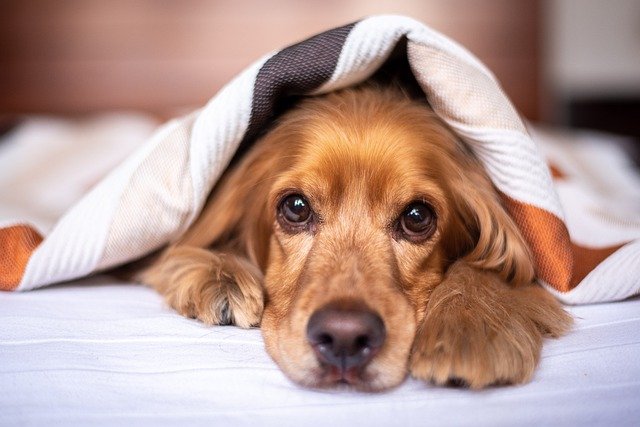Creative ways to take the fear out of this scary dog agility obstacle.
So Philip was surprised when Buzz started avoiding the teeter. No matter what Philip tried – luring him with treats, praising him and patting the board encouragingly – Buzz would not touch the teeter. Finally, the instructor had Philip hold Buzz’s collar and guide him onto the teeter while she held the other end steady. When Buzz got on the teeter, he flattened his body as low as he could, gripped the board with his nails, drooled and trembled from head to tail. “Well, last week, he did seem a little startled when it banged down,” Philip recalled.
“Teeterphobia” can have several causes, including fear of unexpected movement and loud sounds. The best way to avoid this problem is to train this obstacle by initially not using the teeter at all. Here’s a training program you can follow.
Step 1: Start with a wobble board
A wobble board, also called a Buja board (named after agility instructor Brenda Buja), is a square piece of plywood with an object (usually a tennis ball or piece of PVC pipe) attached to the bottom that causes the board to be unstable and wobble when a dog steps on it. The board desensitizes dogs to movement, sound and vibration, which are all key components of successful teeter training. Do-it-yourselfers can easily construct one of these boards. (See “Make Your Own Wobble Board” on page 21.) A variety of wobble boards are also available for purchase online.
Once you have a wobble board, grab your dog, a handful of treats and a clicker. Although verbal behavioral markers, such as saying “Yes!” can work, I prefer a clicker for this type of training because it more precisely identifies the desired behavior. If your dog is naturally sensitive to sounds, start this game on grass or carpeting, and only gradually move it to harder surfaces, which will create more noise when the board hits the ground.
The goal behavior is your dog hopping on the board and making it tip from side to side without any prompting from you.
Start by using the clicker to mark any interaction with the wobble board and immediately reward with treats. Click whenever the dog looks at the wobble board, sniffs it, touches it with its nose or taps it with its paw. Don’t force or encourage interaction. Simply watch the dog and mark the slightest movement toward the board. Don’t be tempted to toss a treat (as a lure or as a reward) onto the board. Remember, the dog should only get onto the board when it’s comfortable, not when it wants to get a treat. The dog might go to retrieve the treat, bang the board as a result, and become startled and scared. Give your dog the treat from your hand.
Mark and reward any successive approximation of the goal behavior, such as the dog touching the board lightly with its paw, then harder until the dog is banging the board. Next, wait to mark and reward until your dog places a second paw on the board, then wait until it shifts more weight onto the board. Eventually, you want your dog to have its entire body on the board, happily banging it back and forth by shifting its weight, or jumping off and on to make it bang.
Step 2: Incorporate balance balls and discs
Sometimes agility trainers borrow from the human exercise world, creating some useful exercises that teach dogs how to balance on moving objects.
A BOSU ball (an acronym that stands for “both sides utilized”) is an inflatable rubber hemisphere usually used for human workout routines. Placing the BOSU ball with the round side on the ground provides a flat surface on which your dog can balance.
Use the shaping techniques described in the wobble-board training plan above. The goal for a small dog is to place all four feet onto the surface and use its core strength to balance so it doesn’t fall off. The goal for a larger dog is to place its front feet on the top, controlling the ball’s movement so the dog doesn’t step off of it. (Some large dogs can fit all four feet up on the ball.)
Balance discs (solid, inflatable discs) are used in the same way as BOSU balls. When training with balance discs, large dogs should place their front feet on one disc and their rear feet on another disc, and maintain their balance.
Step 3: Transition to the teeter
Once your dog is happily and confidently banging away at the wobble board and balancing itself on BOSU balls or balance discs, you’re ready to move back to an actual teeter. First, find a resin patio chair. Lift the end of the teeter the dog usually exits. Wedge the chair under the “downside” or “exit end” until the other end (the original “upside” or “loading” side of the teeter) raises off the ground by just a couple of inches. Get your clicker, treats and dog, and go to the low end of the teeter.
Encourage your dog to bang the teeter, the same way it did on the wobble board. At this stage, it doesn’t matter if the dog jumps up on the teeter, then jumps off. You want it to have a strong desire to make the end of the board bang on the ground. Gradually adjust the chair under the other end so the end closest to the ground rises higher and higher, until your dog has to hop up a little bit to get onto the teeter. Work on both sides of the teeter.
When training, share your excitement. Sessions should be fun for your dog in order to build a strong positive association with the banging board.
Step 4: Side load your dog
With the teeter still propped on a chair, guide your dog to a position between you and the downside of teeter. You will now “load” your dog onto the teeter from the side, into the yellow zone. When your dog hops up, mark the behavior and reward it in that position at the end of the board. Feed your dog several treats in that position before releasing with your verbal release cue (such as “break,” “OK” or “free”). The dog is learning to move to the end of the board, bang it down and wait for a release before getting off.
With these foundation skills in place, your dog is now ready to embark on an agility career free of “teeterphobia.





